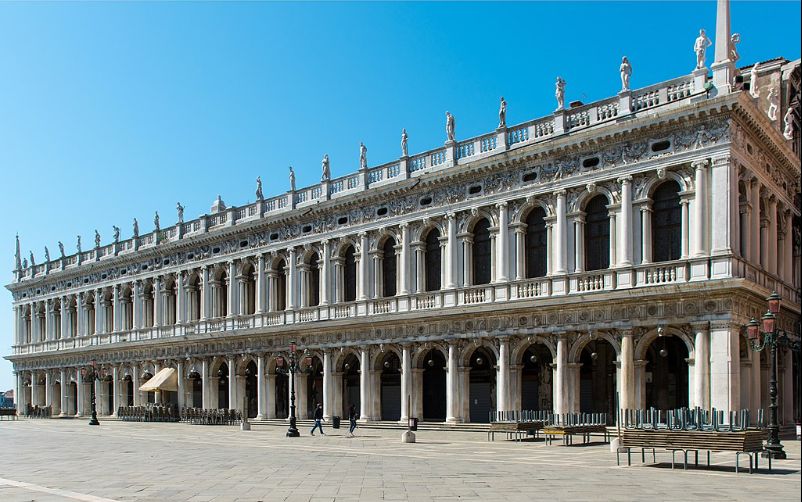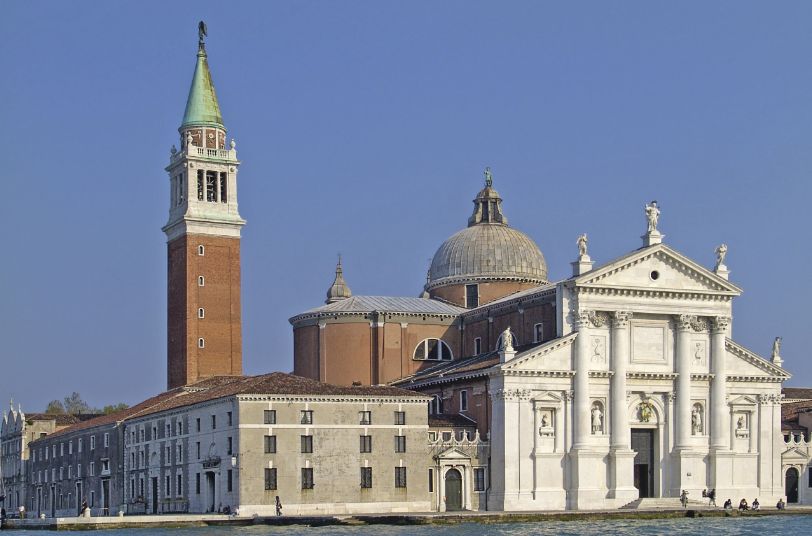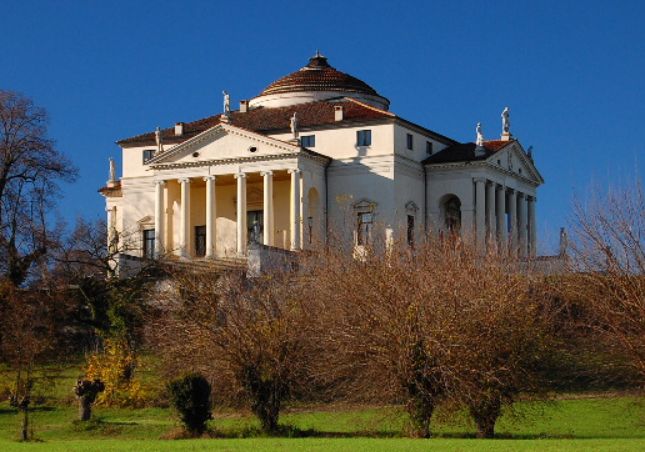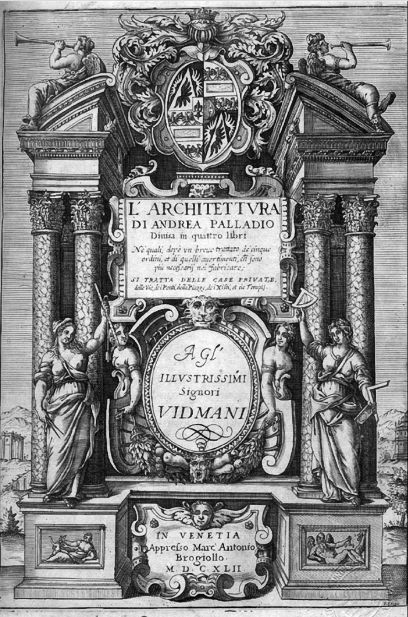The upper structure of the Saint Mark's Library in Venice, with its magnificent loggia, has attracted countless art enthusiasts and scholars. Designed by Jacopo Tatti Sansovino (1486-1570), this building not only showcases the architect's unique understanding of Roman classical style but also stands as a gem of Renaissance architecture. After Rome was sacked, Sansovino chose Venice as his new home, receiving support from Titian and Aretino. Together, they formed a trio that significantly impacted Venetian art. The Saint Mark's Library is part of a larger urban project in Venice, designed to unify the appearance of surrounding buildings and reflect the architect's deep understanding of classical aesthetics.

One of the significant challenges Sansovino faced in designing the library was unifying its appearance. He employed the Doric and Ionic orders, used correctly for the first time in Venice. This design not only made the building more in line with Roman standards but also compensated for the reduced height by adding ornate cornices and balustrades, which gave the building a grander overall appearance. Additionally, he replaced the expensive colored marble inlays traditionally favored by Venetians with symbolic carvings, reducing costs while enhancing artistic expression. This approach demonstrated Sansovino's mastery of classical architectural vocabulary and his ability to blend classical elements with modern needs innovatively.
Like Sansovino, Andrea Palladio (1508-1580) was also a prominent architect of the Renaissance, with his works enjoying fame throughout Venice and Italy. One of Palladio's most famous Venetian buildings is the Church of San Giorgio Maggiore, located on the island opposite the small square. This church solved a problem that had troubled Italian architects since the Renaissance: how to adopt the classical temple front in churches with a nave and lower side aisles. Palladio ingeniously treated the facade as two interlocking temple fronts, successfully merging classical aesthetics with the church structure, creating a design that was both powerful and classically vertically extended.

Palladio's architectural innovations extended beyond design. He was an unusual professional architect who did not engage in other art forms, unlike many contemporaries who were also painters or sculptors. His architectural philosophy was deeply influenced by Renaissance mathematical theories, Vitruvius' writings, and ancient Roman ruins. However, his early architectural experience allowed his designs to escape the constraints of theoretical dogma, showcasing unique creativity and practicality. Palladio's works are found throughout Italy, from palaces in Vicenza to villas scattered across Venice, all reflecting his pursuit of harmonious proportions and deep understanding of architectural aesthetics.
During the Renaissance, architects often were also painters or sculptors. For example, Sansovino was primarily a sculptor. At the time, it was believed that those who did not possess multiple artistic skills could not truly understand the beauty of architecture. However, Palladio was a rare professional architect who focused solely on architecture. His training and practice in the construction industry enabled him to design buildings that were both aesthetically pleasing and practical. In the Villa Rotonda near Vicenza, Palladio perfectly combined four six-columned porticos with a centrally planned building, creating a design that was both grand and functional. This design not only reflected his understanding of classical aesthetics but also responded to modern needs.

In the mid-16th century, Venetian nobility began focusing on agriculture to maintain the republic's economic independence. They improved marshlands, introduced modern farming techniques, and experimented with new crops like corn. This shift created a demand for villas to manage estates closely, and Palladio was the most successful architect in meeting this demand. His villa designs were majestic yet constructed using simple, inexpensive materials like brick covered with stucco, requiring little carved stone. By using temple fronts to emphasize the main facade, he created a noble effect, reflecting the then-prevailing but incorrect belief that ancient Roman villas had such facades.
Palladio's architectural philosophy was innovative not only in design and material choice but also in his emphasis on harmonious proportions, deeply influenced by ancient Greek and Renaissance mathematical theories. The ancient Greeks discovered that if a space or cube was measured using the ratios 1:2, 2:3, or 3:4, it would achieve visual harmony. This belief persisted through the Middle Ages and was understood by some Gothic architects. Palladio's works, described in his treatise The Four Books of Architecture, prominently feature these harmonious proportions, showcasing his desire to achieve even more refined ratios like the major and minor thirds (5:6 and 4:5).

Harmonious proportions were not merely an aesthetic pursuit in architectural design; they also held profound universal significance. In Shakespeare's The Merchant of Venice, when Lorenzo gazes at the starry night sky from the garden of Belmont, he refers to this harmony. People believed that by observing the laws of harmony, every aspect of earthly life could be aligned with heavenly ideals. This belief was prevalent in Venice, where the polyphonic resonance formed by different voices in the social order was considered essential for the republic's happiness. Musical metaphors frequently appeared in political theory and art of the time.
Sansovino and Palladio were outstanding architects of the Renaissance. Their works not only showcased the charm of classical aesthetics but also reflected innovative responses to modern needs. By pursuing harmonious proportions, they created buildings that were both beautiful and practical, becoming classic works in architectural history. Their design philosophies and practices profoundly influenced subsequent architectural styles and aesthetic concepts, elevating Renaissance architectural art to new heights.